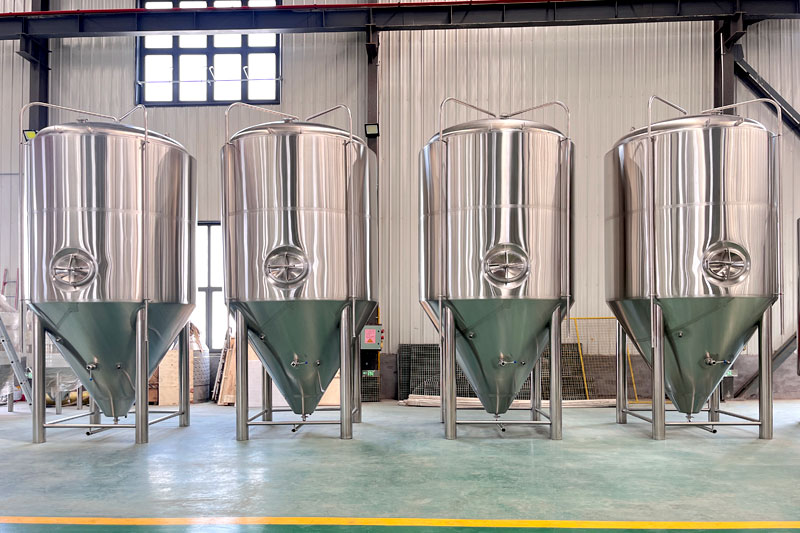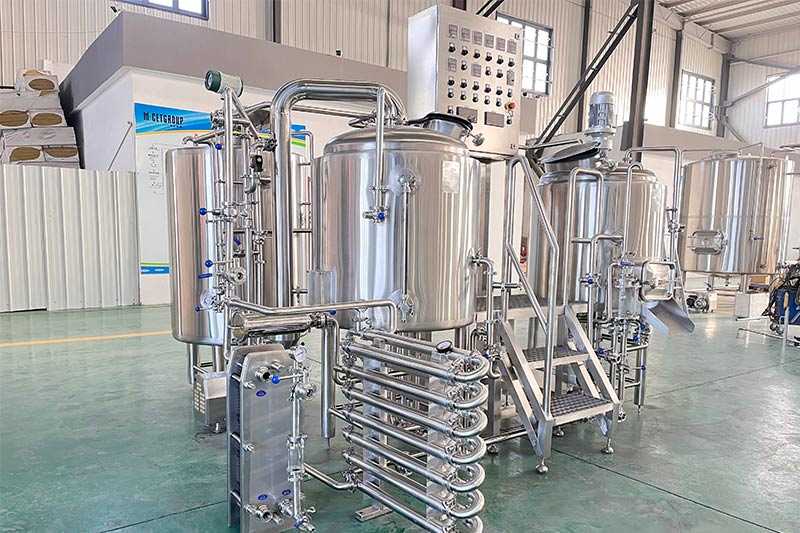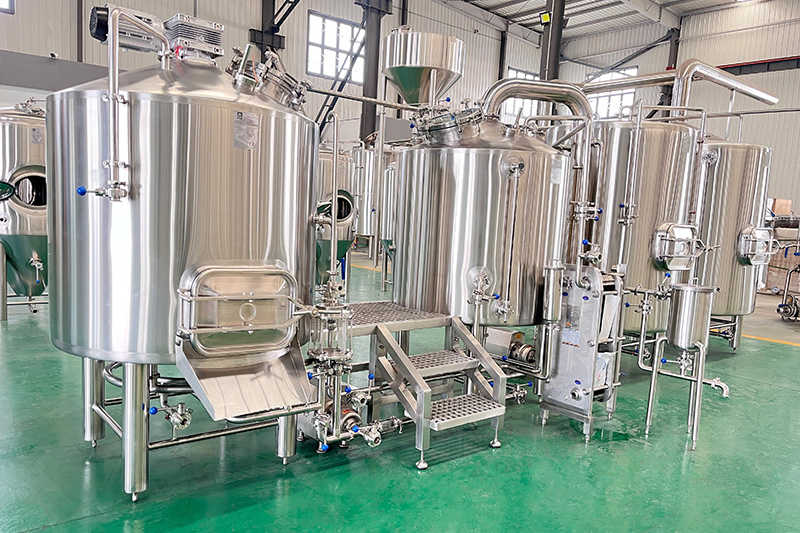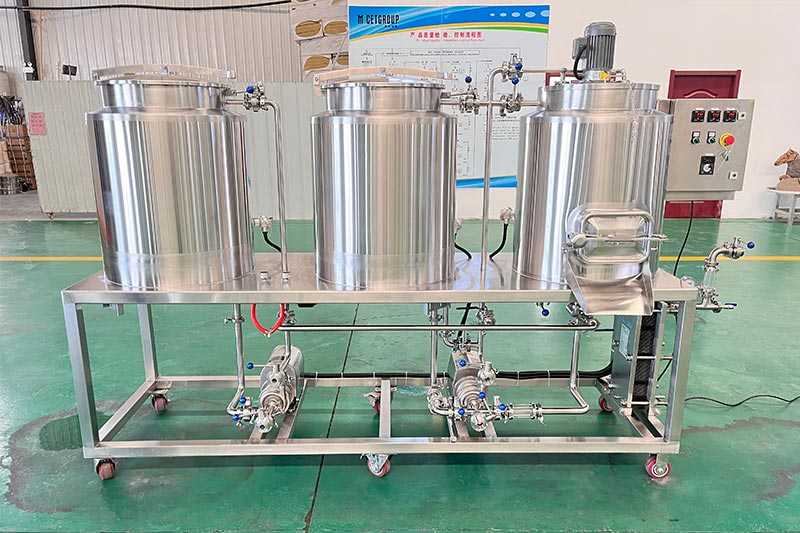Are you curious about the rising popularity of small-scale, craft-focused breweries? Looking to turn your passion into a brewery that produces beer on a humble but rewarding scale? This comprehensive guide explores everything involved in using and selecting nano brewery equipment. By understanding the nuances of the brewing process and choosing the right equipment manufacturer, you can launch your own nano brewing venture with confidence. Whether you are just considering starting a nano brewery or you are interested in equipment upgrades for an existing small-scale brewery, keep reading to learn about the process, the gear, and the potential success these nano breweries can bring.Operating a nano brewery system is about merging passion for craft beer with a practical business approach. This post delves into the step-by-step approach, from conceptualizing the brewery project to using professional brewing gear such as kettles, fermenters, and fermentation tank systems. Together, we’ll cover important considerations for an efficient nano brewery, ensuring you work with the right supplier for a seamless brewing experience.

Why Brew Nano? Unveiling the World of Nano
Before diving into the technical aspects of building your own nano brewery, let’s address a foundational question: why brew on a smaller scale?
The Allure of Nano Brewing
Nano brewing is the smallest scale of commercial brewing within the craft beer industry. As a brewer, you typically produce small batches of craft beer, often just several barrels of beer per batch. This approach keeps initial costs lower and fosters experimentation. Many nano breweries often start with a strong passion for craft beer brewing and a desire to share unique beer recipes with local communities.Key Stats:
- Nano breweries typically produce fewer than 4 barrels of beer per batch (some definitions vary), making them smaller than a microbrewery.
- Many nano setups revolve around 1–3 barrel brewhouse capacity, bridging the gap between home brewing and a fully commercial brewery.
The World of Nano: Craft Beer at Its Core
The world of nano is deeply rooted in creativity and community engagement. Nano breweries often host tasting events, collaborate with local artisans, and serve as hubs for neighborhood gatherings. By focusing on specialized small batches, brewers can experiment with new flavors and styles, testing them quickly in local markets. It’s an art and a science rolled into one.
What Is Nano Brewery Equipment and Who Needs It?
You may have heard the phrase “nano brewery equipment is designed for smaller batches.” But what does it actually mean?
Nano Brewery Equipment Basics
Nano brewery equipment typically includes a small-scale brewhouse (often 1–3 barrels in brew length), fermentation tank units, a kettle, and a fermenter. All of these components must fit comfortably in a smaller brewing environment while still adhering to professional standards of temperature control and stainless steel durability. Because space and overhead are limited, efficiency and multipurpose design become crucial.Equipment includes:
- Brewhouse: Comprising a mash tun, lauter tun, and brew kettle.
- Fermentation tanks: Where your beer transforms from wort into craft beer.
- Cleaning equipment: Helps maintain sanitation, crucial for consistent beer quality.
- Basic equipment for packaging or kegging, if you aim to distribute on a small scale.
Who Needs Small-Scale Brewery Gear?
- Aspiring Brewers: Individuals or teams who want to test new beer recipes and refine their approach in a controlled environment.
- Local Entrepreneurs: People seeking to create a neighborhood hangout that focuses on unique, freshly brewed craft beer.
- R&D for Larger Breweries: “Pilot systems” that allow bigger commercial operations to experiment with new recipes on a smaller scale.
In short, a nano brewery requires equipment sized specifically for smaller production volumes, offering a budget-friendly but professional approach to entering the craft beer scene.
Understanding the Difference Between a Microbrewery and a Nanobrewery
Difference between a microbrewery and a nanobrewery can be subtle but significant. While both focus on craft brewing, the production volumes set them apart.
Production Volume
- Microbrewery: Typically produces up to 15,000 barrels of beer per year.
- Nanobrewery: Often produces beer in batches that yield fewer barrels of beer per brew, resulting in significantly lower annual totals.
Smaller than a microbrewery in scope, a nano brewery system might produce only a few hundred barrels yearly. This smaller scale fosters a more personal touch and experiments with limited-release series. Many nano breweries also commit to local distribution or on-site taproom sales.
Why This Distinction Matters
Choosing a smaller-scale concept like a nanobrewery can be a strategic entry point for entrepreneurs. The capital expense is lower, you can test multiple beer styles, and you typically have a more personal relationship with patrons.
What Equipment Does a Nano Brewery Require?
If you’re considering starting a nano brewery, you must parse through a range of brewing equipment to pick the right equipment. For many owners, that means a plug-and-play, or turnkey, system from an experienced equipment manufacturer.
Essential Equipment for Nano Breweries
Brewhouse
The brewhouse is where you mash grains, sparge them, boil your wort, and add hops. Usually made of stainless steel for durability and ease of cleaning.Fermentation Tank
Fermentation is the heart of the beer brewing process. By controlling temperature and variables, you guide yeast to turn sugars into alcohol. A reliable fermentation tank remains vital for consistent, high-quality brewing operations.Kettle
Your brew kettle is integral for boiling wort, sterilizing it, and infusing the right hop flavors. The kettle typically includes a built-in heating system (fuel or electric brewing) for precise temperature control.Internal Link: For more on advanced setups, check out Nano Brewery Equipment from Micet for specialized solutions matching your brewery needs.
Additional Tools and Accessories
Consider a pilot system if you plan to test new recipes. Also, a few 5bbl or 3bbl fermenters might be enough for your initial production. If you anticipate growth, ensure your layout leaves room for eventual equipment upgrades.
How Does the Brewing Process Work in a Small-Scale Brewery?
Let’s briefly dissect the key brewing process steps that make craft beer possible in a nano environment:1. Mashing and Lautering
Soaked grains are heated in the mash tun to convert starches into fermentable sugars. The watery sugar solution (wort) is separated in the lauter tun.
2. Boiling
The wort is moved into a kettle for boiling. Additional ingredients, like hops, are added to influence flavor and bitterness.
3. Chilling & Transfer
After boiling, rapid cooling is necessary. The wort is then transferred into a fermentation tank, where yeast will be pitched.
4. Fermentation
Yeast converts sugars into alcohol and carbon dioxide inside a sealed fermenter or conical tank. Temperature control is crucial here.
5. Conditioning & Carbonation
After primary fermentation, the beer is either conditioned in a secondary vessel or sent to a bright tank for carbonation, clarifying, and final flavor adjustments.
Internal Link: Beer-Brewing-Equipment from Micet provides a better look at specialized gear for each phase in the process.

Choosing the Right Equipment Manufacturer and Supplier
Your success in craft brewing heavily depends on the reliability of your equipment. The best approach is to partner with a specialized equipment manufacturer who offers tailored solutions that meet your unique production volumes and brewery needs.
Key Factors When Selecting a Supplier
- Experience & Reputation: Seek a manufacturer with a track record in building professional brewing systems for craft beer.
- Quality Equipment: Evaluate the build material (like stainless steel), welding quality, and brewery installation support.
- Support and Training: Post-purchase training or guidance ensures your brew operations remain smooth.
Internal Link: Explore Commercial Brewery Equipment from Micet for a deeper dive into larger systems, even if you plan to scale over time.
Chinese Manufacturers: Are They Reliable?
You might wonder about working with chinese manufacturers. Many deliver great value, blending high product quality with competitive prices. If you align with a reputable brand, you can expect top-tier results, great after-sales support, and on-time delivery.
From Home Brewing to Commercial Brewing: When to Upgrade?
As your passion for brewing transitions from hobby to business, you’ll need to weigh the shift from home brewing to full-scale or partial-scale commercial brewing. The goal might be to move from 5 gallons per batch to, say, 5bbl or even 10bbl capacity.
Indicators It’s Time to Upgrade
- You can’t keep up with customer demand.
- Your brew length is maxed, leaving no room for new recipes.
- You want to keep consistent product lines while introducing experimental variants.
Internal Link: Microbrewery Equipment from Micet can help you jump from a nano to a micro scale if your production volumes call for larger breweries.
Equipment Upgrades That Matter
Equipment can significantly change everything from production efficiency to finished beer quality. If you find yourself wanting advanced temperature control, a CIP (clean-in-place) system, or more advanced fermentation capabilities, an upgrade is in your near future.
Could Electric Brewing Be in Your Future?
Electric brew systems have gained traction among nano breweries. They’re often simpler to operate, require less infrastructure than gas-powered setups, and are suitable for smaller locations. Especially if you operate a brewpub or a taproom with limited space, an electric brewing system can keep your environment safer and more energy-efficient.
Benefits of Electric Brewing
- Consistent Heat Control: Offers fine adjustments, crucial for consistent mashing.
- Cleaner Energy: Potentially more eco-friendly than some traditional heating methods.
- Scalability: Easy to shift from 1bbl to 5bbl setups, matching your production volumes.
Internal Link: For small or mid-range expansions, a Beer-Brewing-System from Micet might offer the perfect bridging solution, including electric heating options.
FAQs
A nano brewery typically brews fewer than 4 barrels of beer per batch, leading to substantially lower annual volumes than micro or larger breweries. Some definitions even specify fewer than 2 barrels per batch, making them smaller than a microbrewery.
A typical nano brewery system might include a 1–3 barrel brewhouse, fermentation tank, and optional bright tank. The exact capacity depends on your business plan and future growth strategies.
A pilot system is a smaller-scale setup that breweries (large or small) use to test new or experimental recipes. It’s often used by bigger commercial brewing operations but can also serve as essential equipment for nano setups wanting multiple smaller batch experiments.
The first thing you need to do is contact us or another reputable supplier. Outline your production goals, budget, and timeline. A professional manufacturer of nanobrewery equipment can propose a custom or turnkey system.
Brewing is a dynamic process. Having after-sales support means you have access to troubleshooting, spare parts, training, and potential expansions down the line—ensuring your brewery operations remain smooth.
A pilot system is typically utilized for experimental small batches. A full nano system, while also smaller than standard, is specifically geared toward continuous production. A pilot system is more of a test bed for new recipes, whereas a nano system is the main production line for your business.
Conclusion and Key Takeaways
Nano brewing represents the smallest scale within the craft beer scene, producing roughly a few barrels of beer per batch. This approach offers big advantages: lower overhead, intimate customer connections, and the freedom to experiment with beer recipes. But achieving consistent results requires the choosing the right equipment from a seasoned brewing equipment manufacturer.When you partner with us—a nanobrewery equipment manufacturer—you gain access to robust and customized solutions. Our stainless steel gear, from 5bbl pilot system designs to essential cleaning equipment, adheres to industry best practices. Whether you’re a brand-new brewer or a veteran looking for personalized expansions, we deliver quality equipment and help you master the art of craft beer brewing.Contact us now if you’re eager to explore professional-grade gear or require turnkey solutions. Remember, the difference between success and mediocrity in nano brewing often lies in having the right brewer’s tools at your disposal.

Key Points to Remember
- Nano brewery equipment is designed primarily for small-scale brew operations, typically less than 4 barrels of beer per batch.
- Nano breweries are a step below microbreweries when it comes to production volumes, making them an excellent choice for entrepreneurs.
- Partner with an equipment manufacturer that specializes in expertly crafted brewhouse gear, fermentation tanks, and more.
- Proper brewing equipment includes a main kettle, mash tun, lauter tun, fermenter, and optional bright tank.
- Craft brewery equipment should be flexible enough for expansions and equipment upgrades as your business grows.
- Nano brewing allows for creativity and direct customer engagement, often leading to a deeply loyal local following.
- Contact micet craft or another reputable supplier to discuss your specific, tailored brewery project needs.
Ready to launch your nanobrewery? The only step you need to do is contact an expert who can provide you with professional guidance and gear. With the correct strategy, the right equipment supplier, and a clear vision for your brewing business, you can produce top-notch beer that stands out in the craft beer marketplace.

